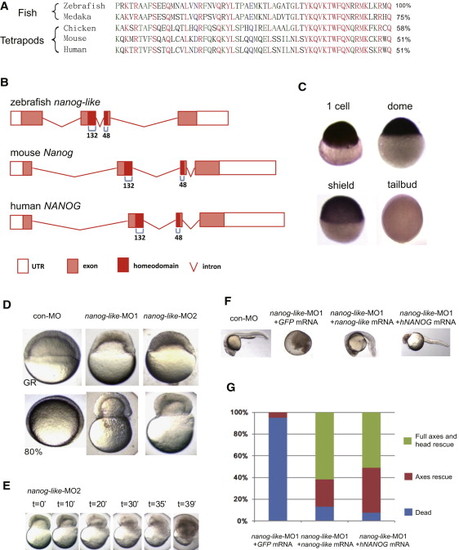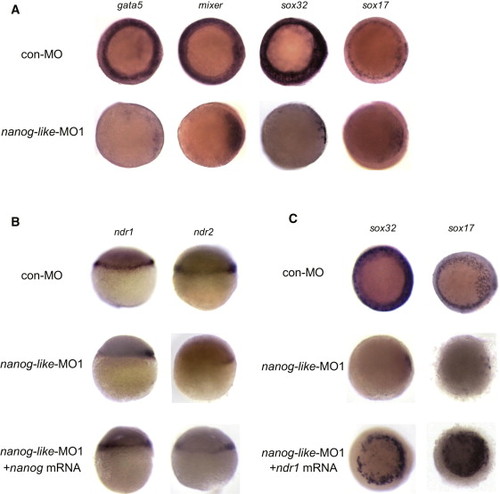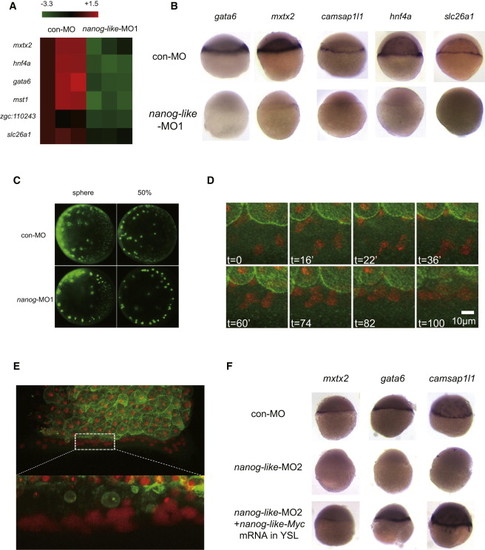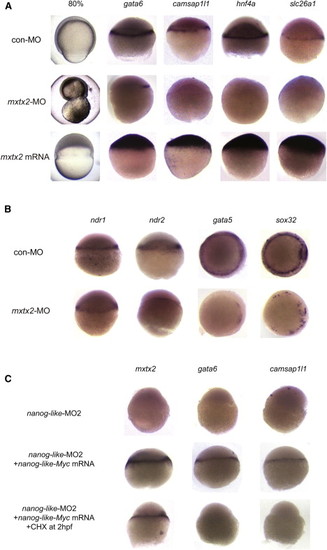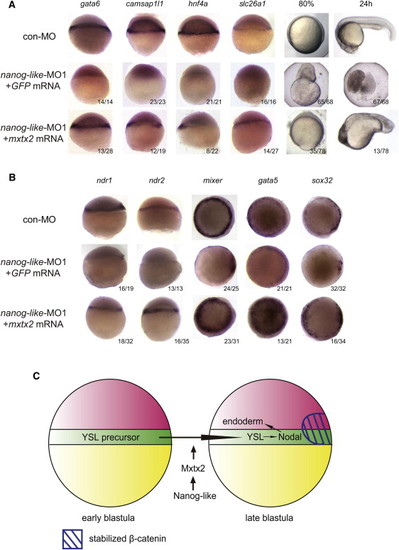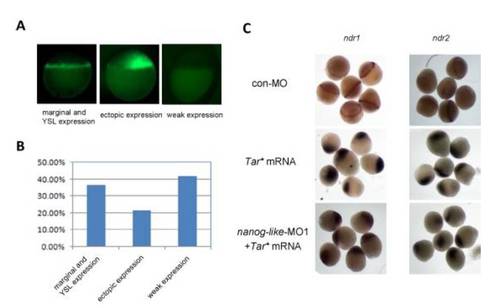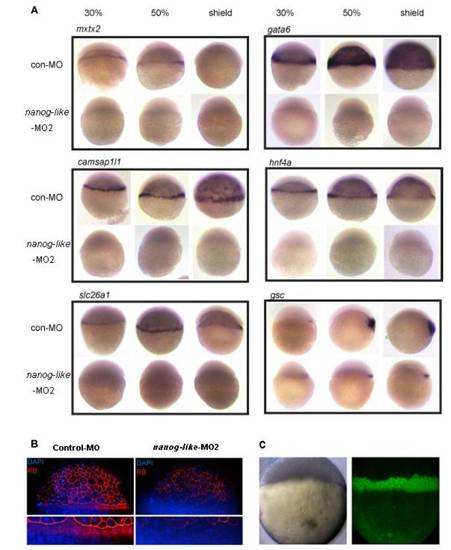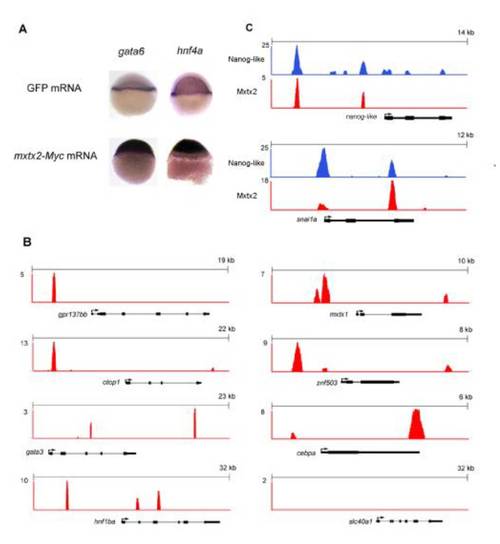- Title
-
Nanog-like Regulates Endoderm Formation through the Mxtx2-Nodal Pathway
- Authors
- Xu, C., Fan, Z.P., Müller, P., Fogley, R., Dibiase, A., Trompouki, E., Unternaehrer, J., Xiong, F., Torregroza, I., Evans, T., Megason, S.G., Daley, G.Q., Schier, A.F., Young, R.A., and Zon, L.I.
- Source
- Full text @ Dev. Cell
|
Identification of the Zebrafish nanog-like Gene PHENOTYPE:
|
|
Nanog-like Regulates Endoderm Formation by Activating Nodal EXPRESSION / LABELING:
PHENOTYPE:
|
|
Lack of YSL Transcription in nanog-like Morphants Leads to Epiboly and Endoderm Defects EXPRESSION / LABELING:
PHENOTYPE:
|
|
Mxtx2 Is Required for and Sufficient for YSL Induction EXPRESSION / LABELING:
PHENOTYPE:
|
|
mxtx2 Expression Rescues the nanog-like Morphant EXPRESSION / LABELING:
|
|
nanog-like morphants can express ndr1 and ndr2 upon receiving Nodal signals, related to Figure 2 (A) 4-cell stage embryos were injected with 20pg GFP mRNA at the vegetal pole of the yolk cell and imaged at the dome stage. Embryos were classified based on their GFP expression pattern. (B) 107 GFP mRNA-injected embryos were sorted into three categories based on their GFP expression pattern. (C) 1-cell stage embryos were injected with 10ng control morpholino (con-MO), or 10ng nanog-like-MO1. To activate the Nodal signaling, 100pg Tar* mRNA was co-injected. Expression of ndr1 and ndr2 was examined by whole mount in situ hybridization. |
|
Lack of YSL transcription in nanog-like morphants, related to Figure 3 (A) The expression of gata6, mxtx2, camsap1l1, hnf4a, and slc26a1 is absent in the YSL of nanog-like morphants. The shield structure is formed in nanog-like morphants, as indicated by the expression of gsc. All views are lateral with the presumptive dorsal side to the right. (B) The F-actin ring is absent in nanog-like morphants. F-factin was stained with rhodamine phalloidin (RP). Nuclei were stained with DAPI. White brackets indicate the F-actin ring in the YSL. (C) Injection of mRNA into the yolk of 2.5 hpf embryos enables YSL-specific expression. GFP mRNA was injected into the yolk of a 2.5 hpf embryo. The embryo was imaged at the dome stage. Left: white field; right: GFP channel. PHENOTYPE:
|
|
Mxtx2 binds to YSL genes, related to Figure 6 (A) Mxtx2-Myc induces ectopic YSL transcription. Lateral view of embryos injected with control 100pg GFP mRNA or 100pg mxtx2-Myc mRNA at the 1-cell stage.(B) Mxtx2 binding profiles at gpr137bb, mxtx1, otop1, znf503, gata3, cebpa, hnf1ba, and slc40a1 loci. ChIP-Seq data are shown in reads per million with the y-axis floor set to 2 reads per million. (C) Binding profiles for Nanog-like and Mxtx2 at the nanog-like and snai1a loci. Many loci are co-occupied by both transcription factors. |
Reprinted from Developmental Cell, 22(3), Xu, C., Fan, Z.P., Müller, P., Fogley, R., Dibiase, A., Trompouki, E., Unternaehrer, J., Xiong, F., Torregroza, I., Evans, T., Megason, S.G., Daley, G.Q., Schier, A.F., Young, R.A., and Zon, L.I., Nanog-like Regulates Endoderm Formation through the Mxtx2-Nodal Pathway, 625-238, Copyright (2012) with permission from Elsevier. Full text @ Dev. Cell

